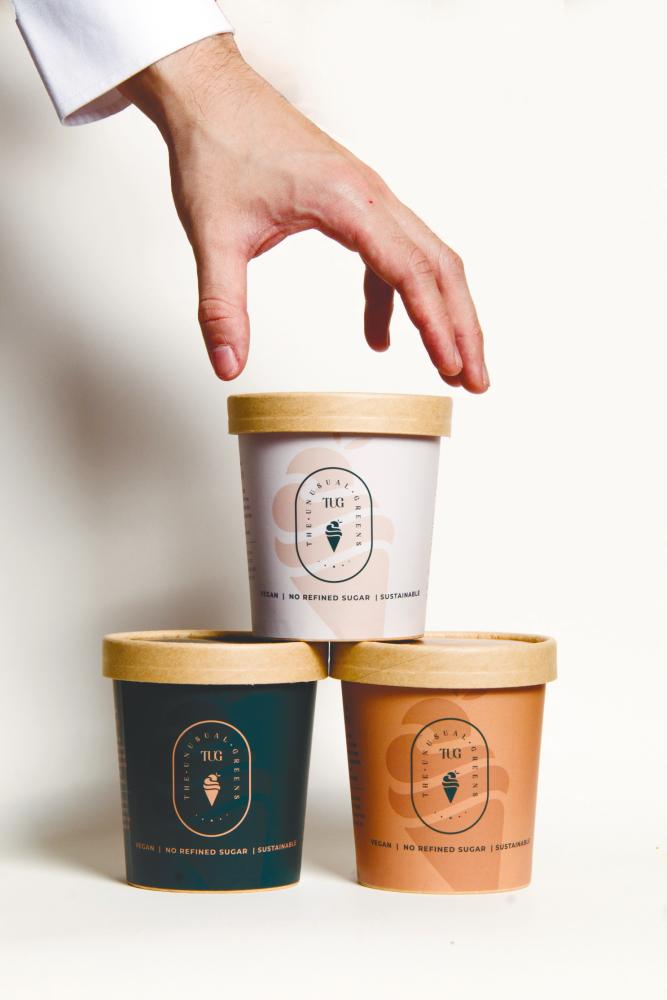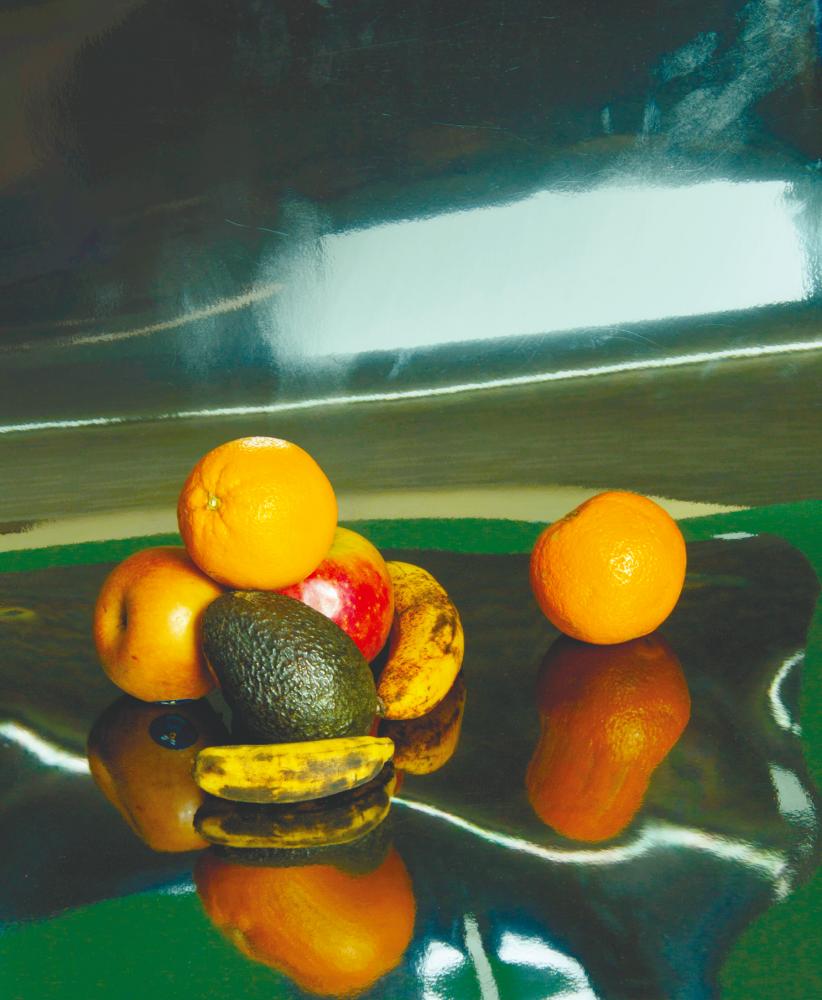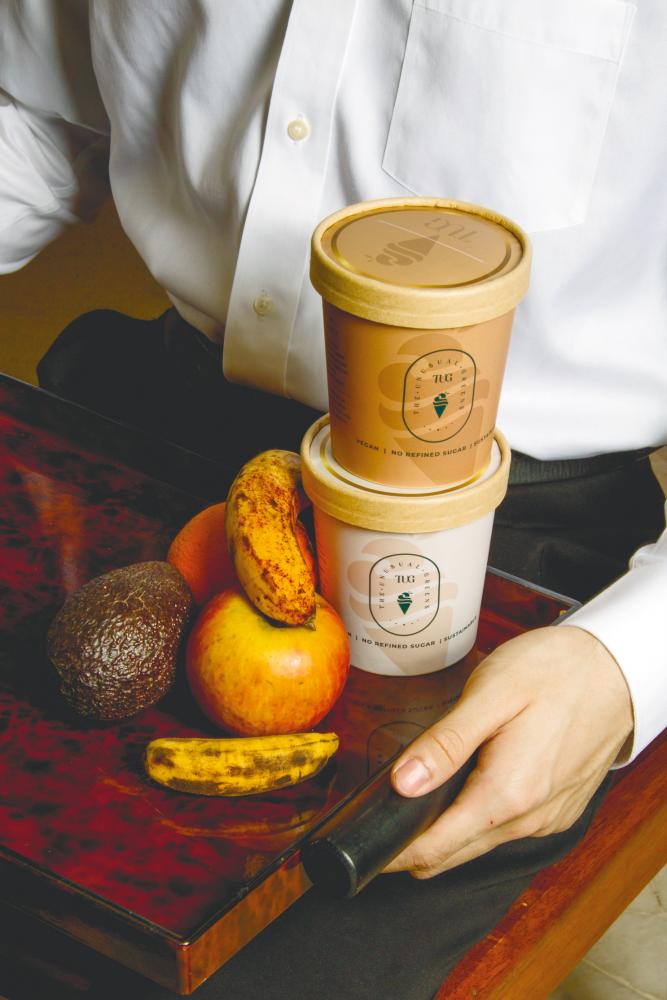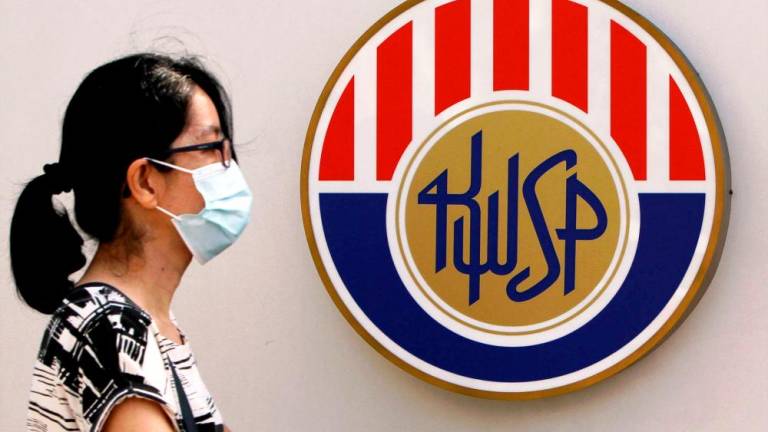THERE is a saying that goes: “Imperfection makes someone or something special.” These words don’t just apply to people with unique features, but also to other imperfect, but still valuable items, such as odd, misshapen fruits and vegetables.
In supermarkets, fruits and vegetables that do not meet the standard size and shape are discarded, despite still possessing the same quality and taste. This causes tonnes of food waste in many countries around the world.
Some people have made it their mission to turn these ‘ugly’ fruits turned into edible dishes.
In Malaysia, a 21-year-old entrepreneur is determined to educate consumers to eat sustainably.
Food advocate Hailey Yong Xin Ying is fighting food waste by turning imperfect fruits into delicious premium gelato since November 2020.
“The first thing that comes to consumers mind is that imperfect fruits are ‘rotten’ or ‘unsafe’ to eat. However, imperfect fruits are simply fruits that don’t look as good, but are still perfectly edible on the inside,” explained Yong.

Small cup, big mission
This ‘food angel’ rescues imperfect fruits, which would otherwise be thrown away, and blends them into a variety of flavourful and naturally sweet gelatos. For the sole purpose of saving ‘unwanted’ fruits, she has even set up a business brand: The Unusual Greens (TUG).
“It was not so much my passion for making gelato, as it was the social cause of food waste that inspired me to repurpose imperfect fruits into something everyone can relate to – gelato,” said Yong.
Through her brand, she has been rescuing about 10kg of fruit per day!
“To my surprise, the amount of fruit surplus and imperfect fruits were shocking, to the point where it can sustain production for around two weeks!” said Yong, who gets her regular supply of unusually-shaped fruits from her neighbourhood fruit stalls and bazaars.
Besides saving fruit from ending up at the landfills, her work also helps small fruit and vegetable stalls to survive through hard times, especially during the Covid-19 pandemic.
“We support these small business owners as a means of giving back to our community, so we will still pay a discounted but reasonable sum in return for getting the imperfect fruits,” revealed Yong.
Starting from scratch
Yong revealed she decided to venture into the gelato-making business after tasting it for the first time and falling in love with it.
She said: “It also made me wonder: Why not combine the best of both worlds, re-purpose food and satisfy people’s cravings while offering a much healthier and guilt-free option? Ultimately, I would want the younger generation to be more conscious of our impact on the environment.”
She wanted to pursue the business despite her young age and lack of experience in the chilled dessert business, as she felt strongly that it was something that she had to do to make a positive impact.
Yong realised TUG’s gelato had to taste different from the common or traditional flavours like vanilla.
She started from scratch, reading multiple books on the art and science of making the dessert, and she had countless research and development sessions just to get the concept right.
“I failed many times but eventually, I got familiar [with the process]. I tried to experiment with unique flavour combinations which were uncommon in the market.
“For example, BTF is our first original flavour, banana and mango blended with a twist and added with toffee sauce and Biscoff. It’s one of our best sellers.”
Apart from BTF, she has invented six other mouth-watering flavours, after mixing and matching with different fruits.

A big challenge
For a cup of gelato, a constant supply of the fruits in a specific quantity is required. However, this is a huge challenge for businesses using imperfect produce.
A lot depends on the availability or quantity of the odd-shaped fruits every day. Sometimes, certain fruits which are the main ingredient for a specific gelato flavour will not be available.
“Our challenge would always be [related to] consistency, as it’s not our intention to make our gelatos ‘perfect’ but rather to save the fruits that may be wasted. Besides, our brand is all about being unusual!”
While there are challenges, there are also benefits in using these fruits. “The imperfect fruits are smoother and have a much softer texture, as I tend to get overripe fruits (with lower price) and it helps to reduce our costs at the same time.”

Gelato with a goal
Through the gelato business, Yong aims to bring attention to food waste and to spread awareness.
“In Malaysia, we waste 17,000 tonnes of food daily, of which 24% is avoidable. It is important to save food because during the decomposition process of food waste in the landfills, potent methane gases are released and it will contribute to global warming.”
Yong feels that saving food helps to reduce economic loss in the food supply chain, as this food could be redistributed to feed the needy.
“Personally, the driving force for starting this social enterprise is to address the disparity between the underprivileged and urban food waste. It is extremely unjust for us to waste food when there are people who do not have the same opportunity to put food on the table on a daily basis,” she said.
“Through the efforts of re-purposing food, I hope to raise awareness on the issue of food waste, as well as to give back to the underprivileged community by donating fruit bags to the B40 or homeless [community], or gelatos to children’s homes for each Tug4Hug bundle sold. (Tug4Hug is a bundle that consists of four pints of gelatos),” said Yong.
As an ugly food advocate, she hopes for action or changes to be made at both the individual and institutional levels.
“As individuals, we should consume food in a more sustainable manner, by being aware of the issue of food waste and the consequences that follows.”
“To accomplish this, we will need continuous and sustained joint efforts from the public and private sectors, as well as civil society, to advocate and educate for awareness, execute focused efforts, and use resources efficiently,” she added.










